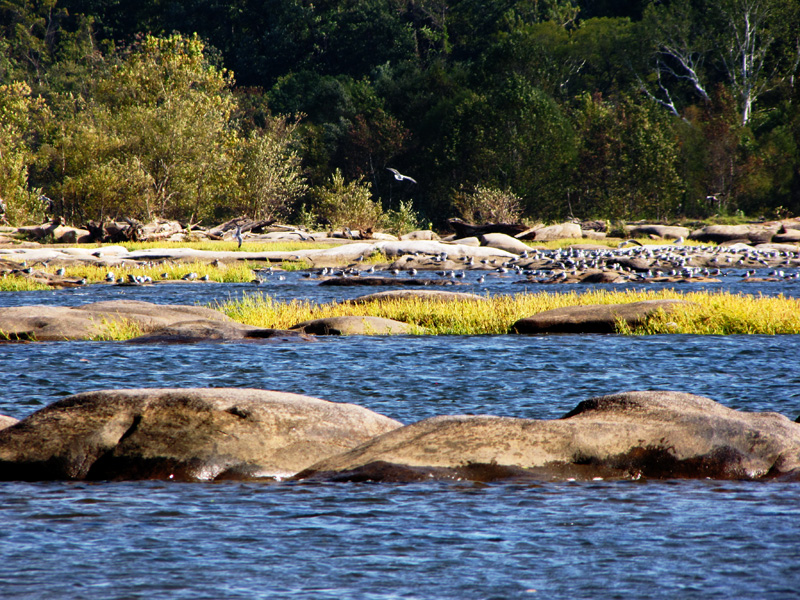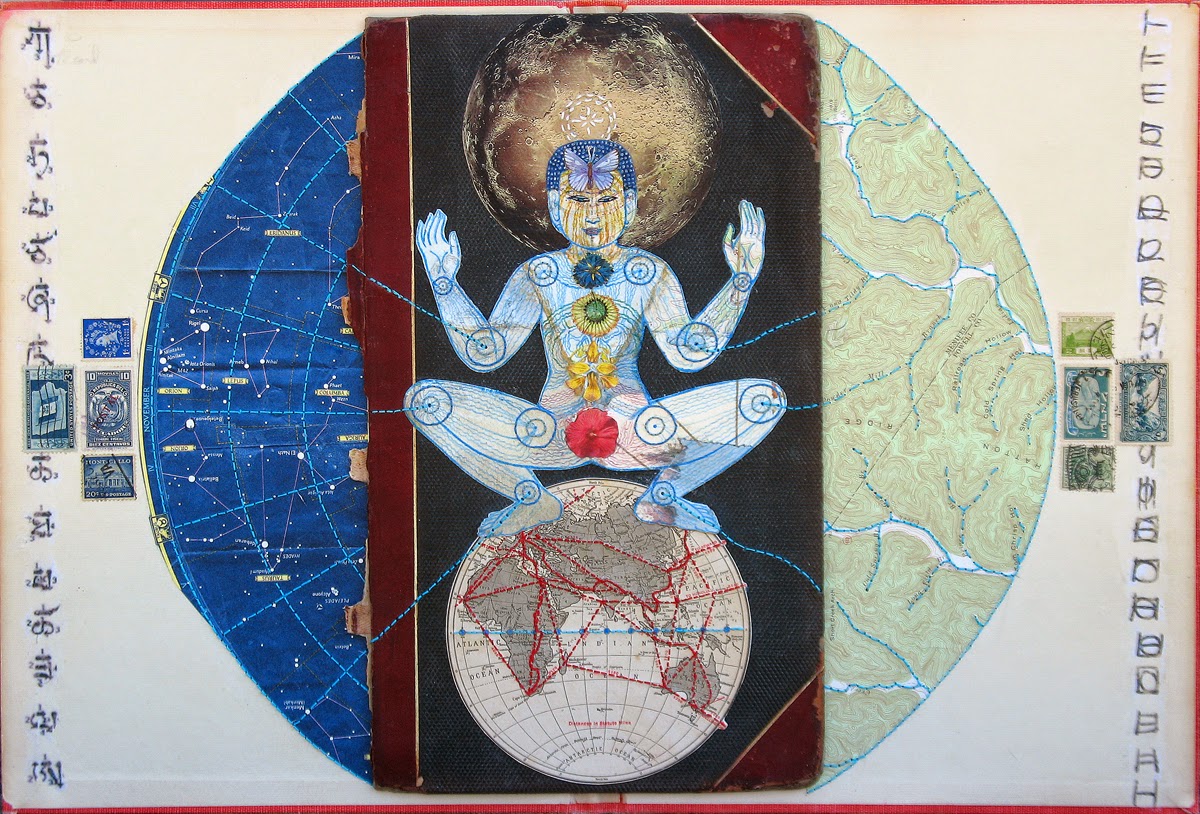This piece took form very organically, though it probably doesn't look like it. I had this figure from an earlier work that had just never worked out, and I really didn't think it was likely that I'd ever find a use for him. I copied him from an ancient Chinese or Tibetan medical drawing (minus a bunch of the tiny pathways), showing the pathways of energy movement through the body. Apparently they saw the human energy/astral body as having only five chakras at that time; I represented 4 of these as flowers and one as a butterfly. (Later I added the crown chakra in the form of a stitched 'star'.)
Anyway, I had cut out the eastern hemisphere from a vintage atlas and ended up not using it on the previous piece; somehow they ended up together, and I thought, well, maybe... Then I remembered the moon I had cut out for something else. They looked alright together on the ledger cover I had just taken apart, but it was pretty boring., and seemed too large for the narrow cover. I then played around with the idea of placing the ledger cover on top of a larger one, but the only one that was really large enough was, well - a LOT larger.
Now I had the opposite problem - what to do with all that empty space. I decided that since the design was very centered and simple, it might be best to stick with that, and also to continue with the circle motif. Oddly enough, I immediately opened one of my map drawers and found this beautiful semi-circular piece of a star map that was just the right size. When that happens, I figure I've got to go with it; I cut out a piece of a topographical map the same size for the other side.
Whenever I see a design that's very balanced and symmetrical, I think of yin and yang, and the dao. With this piece, I began to see the left side, which is marked off in regular and specific increments, as the more civilized, regimented part, associated with learning to do things a certain way. The right side became for me the side of nature, unpredictable and meandering, like the rivers I stitched. So the left side was the dharma - the Buddhist teachings, while I have always connected Daoism with nature. I have always seen Buddhism and Daoism as being quite compatable, and many of their philosophies seem to overlap. One idea common to both of them is that everything is connected, part a whole. I wanted to emphasize that humans are part of that whole by having the stitched lines on both sides leading into the circles on the figure.
The edges were empty, so I chose two different types of characters to embellish them with: Tibetan letters with instructional arrows to represent the teachings (dharma), and very early primitive Chinese characters to represent the dao (nature) side. This piece is very logical compared to most of my work, and so I felt the title had to be
The Dharma and the Dao. My other possible choice was
Toward the One. What do you think?
“The Formless Way
We look at it, and do not see it; it is invisible.
We listen to it, and do not hear it; it is inaudible.
We touch it, and do not feel it; it is intangible.
These three elude our inquiries, and hence merge into one.
Not by its rising, is it bright,
nor by its sinking, is it dark.
Infinite and eternal, it cannot be defined.
It returns to nothingness.
This is the form of the formless, being in non-being.
It is nebulous and elusive.
Meet it, and you do not see its beginning.
Follow it, and you do not see its end.
Stay with the ancient Way
in order to master what is present.
Knowing the primeval beginning is the essence of the Way.”
― Lao Tzu (Daoism)
The Heart Sutra (Buddhism)
...form does not differ from emptiness;
emptiness does not differ from form.
Form itself is emptiness; emptiness itself is form.
So too are feeling, cognition, formation, and consciousness.
Shariputra, all Dharmas are empty of characteristics.
They are not produced, not destroyed, not defiled, not pure;
and they neither increase nor diminish.
Therefore, in emptiness there is no form, feeling, cognition, formation, or consciousness;
no eyes, ears, nose, tongue, body, or mind;
no sights, sounds, smells, tastes, objects of touch, or Dharmas;
no field of the eyes up to and including no field of mind consciousness;
and no ignorance or ending of ignorance,
up to and including no old age and death or ending of old age and death.
There is no suffering, no accumulating, no extinction, and no Way,
and no understanding and no attaining.
Because nothing is attained,
the Bodhisattva through reliance on
Prajna Paramita is unimpeded in his mind.
Because there is no impediment, he is not afraid,
and he leaves distorted dream-thinking far behind.
Ultimately Nirvana!

















.jpg)











